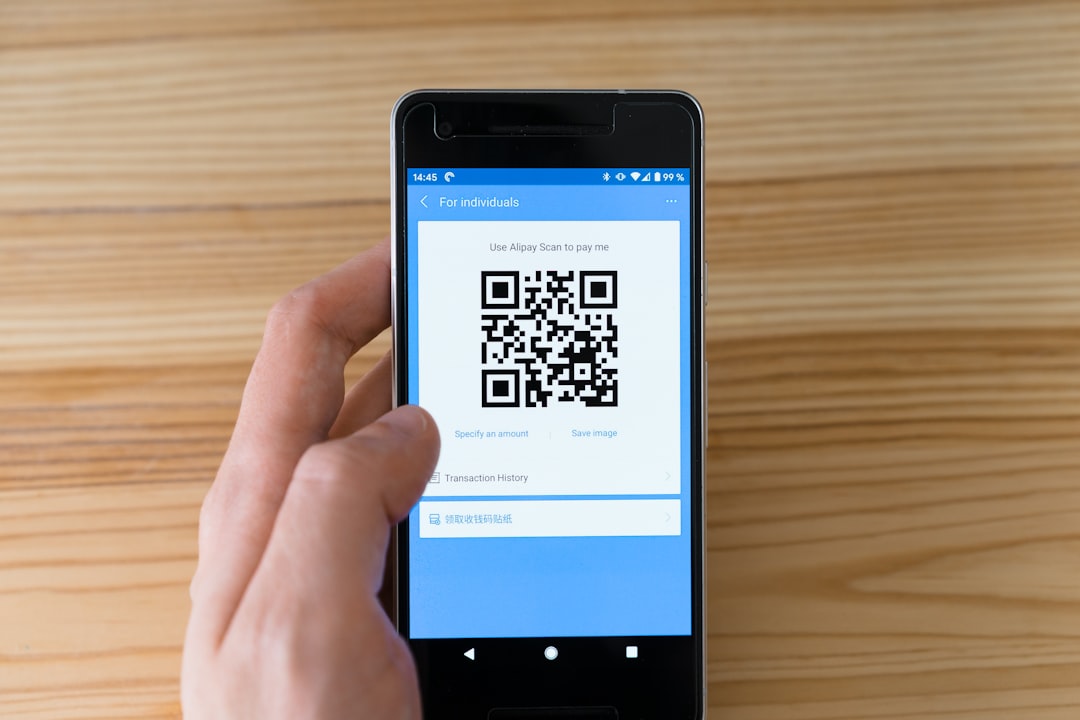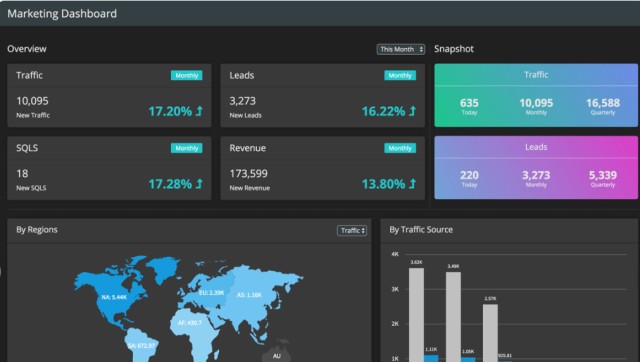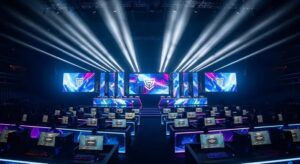The Next Frontier: Unpacking the Shift to On-Chain Mobile Experiences
The history of video games is a story of constant evolution, from the pixelated simplicity of arcade cabinets to the photorealistic worlds of modern AAA games. Each era was defined by a technological leap: the move from 2D to 3D, the advent of online multiplayer, and the rise of digital distribution on platforms like Steam. Today, the gaming industry stands at the precipice of another transformative shift, one that promises to fundamentally redefine our relationship with in-game assets, economies, and communities. This revolution is happening in the most accessible arena of all: mobile gaming. While the worlds of PC Gaming and Console Gaming have long dominated hardcore gaming discourse, the ubiquity of smartphones is making them the primary battleground for innovation. We are witnessing the emergence of real-time, on-chain gameplay delivered through decentralized application (dApp) stores. This isn’t just a new way to play; it’s a new architectural paradigm that moves core game logic and asset ownership from centralized servers onto a public blockchain, creating persistent, player-owned digital worlds. This article delves into the complex technical architecture, the immense challenges, and the profound implications of this burgeoning movement in the Gaming Industry.
Section 1: The Architectural Shift: Centralized vs. Decentralized Gaming
To understand the magnitude of the shift to on-chain mobile gaming, we must first dissect the traditional architecture that has powered video games for decades and contrast it with the new decentralized model. The differences are not merely cosmetic; they represent a fundamental change in where data lives, who controls it, and what value it holds.
The Walled Garden: Traditional Mobile Gaming Architecture
For years, whether you’re playing a sprawling RPG or a simple puzzle game on your phone, the experience has been governed by a client-server model. Your device (the client) sends your actions to a central server controlled by the game developer. This server processes the game logic, updates the game state, and manages all data, including your profile, progress, and in-game items. When you make an in-app purchase for a new skin or weapon, you aren’t truly buying the item; you’re purchasing a license to use that item within the game’s closed ecosystem, or “walled garden.” This data is stored in a private database, and its value is entirely dependent on the developer’s continued support of the game. If the servers shut down, your hard-earned assets vanish. This model, while efficient and familiar, concentrates all power in the hands of the developer and platform holders like Apple and Google, who take a significant cut of all transactions.
The Open Ledger: The On-Chain Paradigm
On-chain gaming flips this model on its head. Instead of a private database, the core game state and asset ownership are recorded on a public, distributed ledger—the blockchain. Every significant in-game action, from crafting an item to defeating a boss, can be registered as a transaction on the chain. In-game assets are represented as Non-Fungible Tokens (NFTs), unique digital certificates of ownership that reside in the player’s personal crypto wallet, not on the developer’s server. This is the essence of a dApp. This architectural choice has profound consequences for the Gaming Community. It enables “true digital ownership,” where players have verifiable, sovereign control over their assets. They can trade, sell, or even use these assets in other compatible experiences, creating an open and interoperable digital economy. For those following Game Development, this means leveraging new tools and skills, with engines like Unity and Unreal now seeing increased support for blockchain integration, a topic frequently covered in Unity News and Unreal Engine News.
Section 2: Technical Hurdles and Breakthroughs of On-Chain Mobile Gameplay
The concept of on-chain gaming is powerful, but its practical implementation, especially for real-time mobile experiences, is fraught with technical challenges. The core tension lies in reconciling the high-speed, low-latency demands of modern gaming with the often slow, deliberate, and costly nature of blockchain transactions. Overcoming these hurdles is the key to unlocking mainstream adoption.

The Latency Challenge: The Quest for Speed and Scalability
The biggest obstacle is performance. Blockchains like Bitcoin and early Ethereum were designed for security and decentralization, not speed, capable of only a handful of transactions per second (TPS). This is completely unworkable for any game requiring real-time interaction, such as fast-paced FPS Games, strategic MOBA Games like those featured in League of Legends News, or chaotic Battle Royale titles. A single action in a game like Valorant or Apex Legends can’t wait several minutes for block confirmation. This is where high-performance blockchains come into play. Newer networks, often referred to as “Solana-killers” or Layer 2 scaling solutions, are designed for high throughput, boasting theoretical TPS in the tens of thousands. This advancement is a critical piece of Gaming Tech, making it finally feasible to process a high volume of in-game actions on-chain with near-instant finality, a crucial development for Competitive Gaming.
Frictionless UX: Abstracting Blockchain Complexity
The second major hurdle is user experience (UX). The traditional crypto onboarding process—setting up a wallet, securely storing a 12-word seed phrase, and managing gas fees for every transaction—is a non-starter for the average mobile gamer. Success in this space depends on abstracting away this complexity. Innovative solutions are emerging, such as embedded wallets that are created automatically with a social login, and “gasless transactions,” where the developer subsidizes the network fees on behalf of the player. The goal is to make a dApp feel indistinguishable from a traditional app from the user’s perspective. This focus on intuitive Game Design is essential to bridge the gap between the niche crypto world and the massive Mobile Gaming audience.
Hardware and Software Integration: The Rise of dApp Stores
Getting a crypto-enabled game onto the Apple App Store or Google Play Store can be a nightmare due to restrictive policies on NFTs and digital asset trading. This has led to the rise of specialized hardware and dedicated dApp stores. Crypto-native mobile devices are being developed with built-in secure elements for key storage, and curated dApp stores provide a trusted environment for users to discover and download web3 games. This creates a streamlined ecosystem, much like the relationship between Gaming PCs, powerful Graphics Cards, and platforms like Steam. For gamers accustomed to browsing Steam News or Epic Games News for the latest releases, these dApp stores represent a new, decentralized frontier for game discovery and distribution.
Section 3: Redefining Ownership, Economy, and Community
Moving gameplay on-chain is more than a technical feat; it’s a catalyst for new economic models, deeper community engagement, and a re-evaluation of what it means to own a digital item. This shift has the potential to empower both players and developers in unprecedented ways.
From License to Asset: True Ownership and Interoperability
In a game like Fortnite or Call of Duty, the hundreds of dollars a player might spend on skins are locked to their account and that specific game. On-chain assets, as NFTs, change this dynamic. A legendary sword earned in one fantasy MMORPG could potentially be recognized as a unique gun skin in a sci-fi shooter or displayed as a trophy in a player’s virtual home. This concept of interoperability, while still in its infancy, is the holy grail of the metaverse. It transforms in-game items from simple licenses into durable digital assets that have value and utility beyond their original context. This paradigm also opens the door for a vibrant ecosystem of third-party marketplaces, analytics tools, and community-driven projects built around a game’s assets, fostering a culture similar to the creative world of Game Mods seen in games like Minecraft.

Player-Driven Economies and Governance
With on-chain gaming, the in-game economy becomes transparent and often player-driven. Instead of developers setting fixed prices, assets can be traded on open markets where value is determined by supply and demand. Furthermore, many projects are experimenting with Decentralized Autonomous Organizations (DAOs). In a DAO model, players who own the game’s governance tokens can vote on key decisions, such as game balance changes, new feature development, or how the community treasury is spent. This gives the Gaming Community a real stake and a powerful voice in the game’s evolution, turning passive players into active participants. This level of engagement is a dream for many developers and a core tenet of the web3 ethos, impacting everything from Indie Games to larger titles covered in Esports News.
Section 4: The Road Ahead: Best Practices and Future Outlook
The path to a fully on-chain mobile gaming future is still under construction. For this movement to succeed, developers must adhere to new best practices, and players must learn how to navigate this new landscape. The potential is immense, but so are the pitfalls.
Best Practices for Developers and Gamers
For developers entering this space, the mantra should be “gameplay first.” The blockchain elements should enhance the experience, not be a gimmick. Choosing the right blockchain based on speed, cost, and security is paramount. For gamers, diligence is key. It’s important to research the development team, understand the game’s tokenomics, and read independent Game Reviews. A promising project will have a clear roadmap, a strong community, and, most importantly, a fun and engaging core gameplay loop. Players should also invest in proper security for their digital assets, using hardware wallets for high-value items, much like they would invest in quality Gaming Peripherals like a good Gaming Headset or Gaming Keyboard to enhance their traditional gaming experience.
The Future Trajectory: Convergence and Mainstream Adoption
Looking forward, we can expect a convergence of technologies. The principles of on-chain ownership could blend seamlessly with Cloud Gaming and Game Streaming services, allowing players to access their persistent digital assets from any device. The immersive potential of VR Gaming and AR Gaming becomes even more compelling when the virtual objects you interact with have real-world, verifiable value. While major console manufacturers discussed in PlayStation News, Xbox News, and Nintendo News have been cautious, their eventual entry could trigger a tidal wave of adoption. The ultimate goal is a future where the underlying technology is invisible, and players simply enjoy richer, more rewarding, and persistent gaming worlds.
Conclusion: A New Chapter in Gaming History
The emergence of real-time on-chain mobile gaming represents a pivotal moment in the evolution of interactive entertainment. It is a complex and challenging endeavor, demanding innovations in blockchain scalability, user experience design, and hardware integration. However, the potential rewards are revolutionary: a future with true digital ownership, player-driven economies, and more deeply engaged gaming communities. By moving beyond the walled gardens of traditional app stores and embracing the open, decentralized architecture of the blockchain, developers are not just creating new games; they are building the foundations for the next generation of the internet. This movement from centralized servers to open ledgers is more than just a trend; it’s a new chapter in Gaming History, promising a more equitable and empowering digital future for gamers everywhere.











